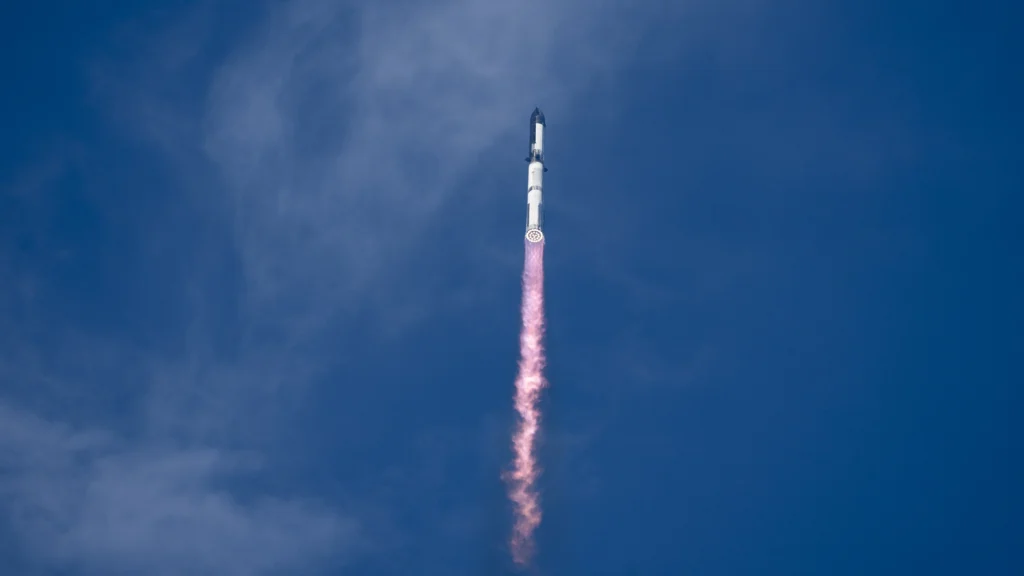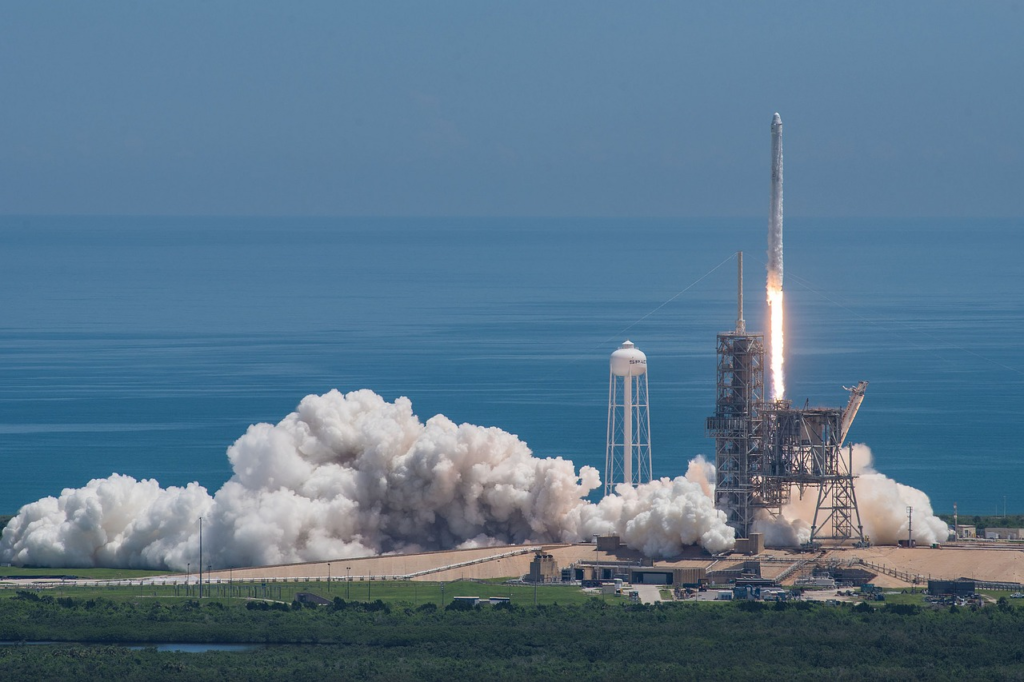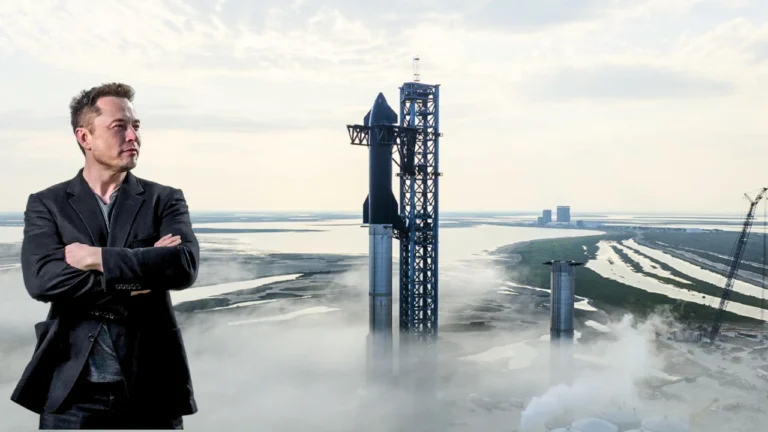TEXAS- SpaceX’s Starship Flight 9 exploded during reentry on May 27, 2025, after launching from Starbase. The uncrewed rocket, operated by SpaceX, marked the third consecutive high-altitude test failure.
The spacecraft, launched from Boca Chica, encountered multiple issues after liftoff, including a fuel leak and structural failure, despite completing its engine cutoff phase. The flight was part of Elon Musk’s long-term goal to deploy Starship for missions to the Moon and Mars.

SpaceX Starship Exploded Again
SpaceX’s ninth test of the Starship system began successfully with a liftoff from its Texas launch facility but ended in failure during reentry. This marks the third time the vehicle has been lost during testing, following similar outcomes in January and March.
The full stack—Super Heavy booster and Starship—is about 400 feet tall and designed to carry heavy cargo and crew on interplanetary missions.
A livestream hosted on SpaceX’s platform showed the Super Heavy booster exploding shortly after stage separation. The upper-stage Starship continued its flight but later suffered a fuel leak and spinning instability before disintegrating upon atmospheric reentry.
The Federal Aviation Administration (FAA) confirmed it was reviewing the “anomaly” and reported no damage or injuries on the ground.
Despite the explosion, Elon Musk emphasized a milestone: Starship achieved scheduled engine cutoff with no major heat shield damage during ascent. However, he acknowledged the main tank pressure loss due to leaks during the coast and descent phase.
These failures are guiding SpaceX in its iterative development model, where each flight provides critical data to improve the system’s reliability.

FAA Oversight
Until recently, SpaceX was capped at five Starship launches annually from its Texas site. That changed earlier this month when the FAA approved a higher launch frequency.
This regulatory shift enables SpaceX to accelerate its testing cadence, with Musk targeting a new launch every three to four weeks.
The FAA remains actively involved in monitoring Starship’s test campaign. It has collaborated closely with SpaceX following each anomaly to ensure public safety and review operational procedures. The agency emphasized that no public property or lives were at risk during the Flight 9 incident.

Multiplanetary Vision
Starship is central to SpaceX’s broader vision of interplanetary transport. Beyond Earth orbit missions, it is planned for lunar cargo deliveries under NASA’s Artemis program and future Mars colonization.
Despite setbacks, the company insists that failures are expected during experimental test phases and contribute valuable engineering insights.
SpaceX reiterated this point via a post on X, stating: “Success comes from what we learn.” The company aims to make the Starship platform more reliable through rapid iteration and hardware upgrades informed by each flight.
SpaceX has received over $19 billion in U.S. government contracts since 2008. These funds support launch services, NASA partnerships, and national defense projects. Alongside partners, SpaceX is considered a leading candidate for President Donald Trump’s “Golden Dome” missile defense program.
CEO Elon Musk’s influence extends beyond aerospace. His leadership of the Department of Government Efficiency (DOGE) under the Trump administration has resulted in federal workforce reductions and budget cuts to oversight bodies such as the FAA and EPA, agencies tasked with regulating SpaceX operations.
Stay tuned with us. Further, follow us on social media for the latest updates.
Join us on Telegram Group for the Latest Aviation Updates. Subsequently, follow us on Google News

